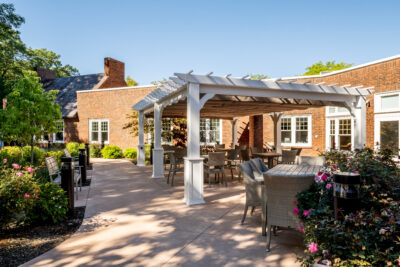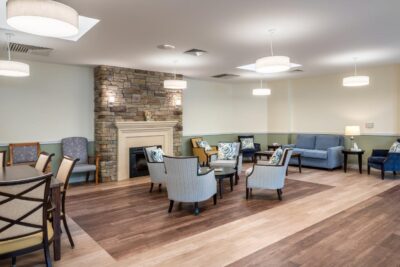Senior living is at a crossroads. Across the country, facilities built decades ago are struggling to meet the expectations of a new generation. What once worked for earlier models of care now feels outdated in the face of shifting demographics, new standards for autonomy and accessibility, and rising demand for environments that promote dignity, independence and connection.
Today’s residents and their families expect more. They want spaces that support wellness and community, not just housing. They want safety and comfort seamlessly integrated into daily living. As expectations rise, outdated infrastructure is showing its age, creating real challenges for quality of care, operations and market competitiveness. Modernization isn’t an option anymore – it’s urgent.
Where to Focus: Key Areas Driving Change
Not every upgrade carries the same weight. Strategic renovations in high-impact areas can transform the experience of residents, staff and visitors, while also protecting long-term value. Owners and operators are targeting upgrades that deliver both immediate impact and long-term ROI, focusing on:

Modern outdoor courtyard, pergola and seating area, promoting connection, independence and wellness for residents.
- Resident Amenities: Transforming high-use areas like dining rooms, activity spaces and amenities into vibrant, welcoming environments.
- Technology & Safety Systems: Integrating life-safety technology, AI-powered monitoring, telehealth capabilities and seamless yet secure building access that provides peace of mind.
- Community Spaces: Creating open and versatile environments that encourage autonomy, interaction and connection.
- Mechanical & Sustainable Infrastructure: Replacing outdated HVAC, plumbing and electrical systems for reliability, energy efficiency and healthier indoor environments.
The right approach transforms facilities for both residents and staff, delivering improvements without compromising safety, comfort or continuity.
Why It Matters Now
Modernization is about more than aesthetics; done right, it improves care and efficiency across the board:
- For Residents: Updated facilities create more home-like experiences, improve health outcomes and provide environments where independence and dignity are prioritized.
- For Staff: Thoughtful design reduces inefficiencies and fatigue, helping teams focus on care rather than navigating outdated systems or layouts.
- For Owners and Operators: Renovations ensure ADA compliance, reduce liability, improve competitiveness and align facilities with the expectations of today’s market.

Open, welcoming and flexible common family room.
Senior living facilities that modernize now position themselves to attract residents, retain staff and deliver care more effectively in an increasingly competitive market. The future of the industry will be defined by spaces that balance care, community and independence. Facilities that proactively invest in modernization aren’t just keeping up, they’re shaping a new standard of living for seniors.
The most successful projects combine strategic design, careful phasing and a partner who understands the complexities of working in occupied facilities. At Timberline, our team brings this expertise to every project, delivering upgrades that are seamless, cost-effective and transformative for residents, staff and ownership.
Modernizing senior living takes experience and the right partner. Get in touch with Kevin A. Kozak, AIA, MBA, LEED AP, Timberline’s Vice President of Design, to explore how we can help shape your facility’s future.
